Advnture Verdict
The Cevedale Pro GTX Mid is a solid all-rounder where mountaineering is concerned. It’ll suit alpine adventurers, winter mountaineers and anyone who enjoys walking in snowy environments. It’s not as light as some B2 boots doing the rounds, though it’s reassuringly capable on technical terrain and its heft makes it an option you’ll be able to rely on during committing adventures.
Pros
- +
Crampon compatible
- +
Excellent Vibram outsole
- +
Highly protective
- +
Superb support and stability
- +
Great lacing system
- +
Fully resoleable
Cons
- -
Not as light as some
You can trust Advnture
Lowa was founded in Bavaria, Germany in 1923 and has spent the last 100 years crafting – and forging a reputation for – high quality outdoor footwear. It has remained true to its core competency during this time and hasn’t made any significant forays into apparel or other such business lines – though it launched its first three pairs of trail running shoes in 2023. However, Lowa’s main focus remains hiking boots, shoes, mountaineering boots and the various niches in between.
The Cevedale Pro GTX Mid is one of the brand's standard mountaineering boots, a B2-rated powerhouse for alpine exploits and winter conditions. It’s compatible with a C2, semi-automatic crampon, making it suitable for winter walking and general mountaineering, but not steeper ice climbing or high-altitude activities, which require a C3 boot.
It’s available in the UK, alongside the burlier, warmer Alpine Expert II GTX. However, despite Lowa’s mountaineering boot offering being more substantial in the States, the Cevedale Pro GTX isn’t one of those available there. However, it’s a very similar boot to the slightly lighter Cevedale II GTX, which is available in the US for $304 at the time of writing.
First impressions
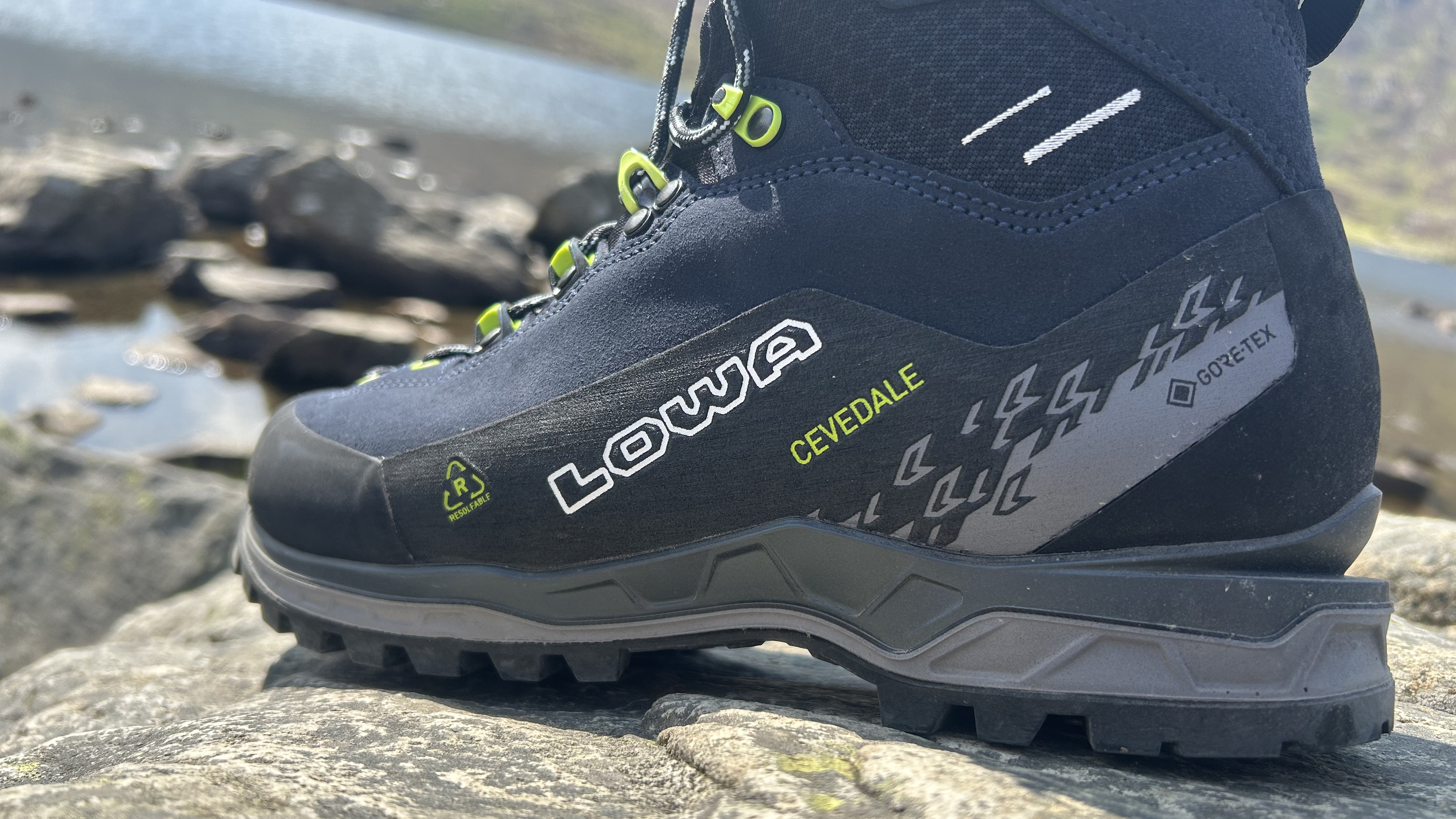
RRP: £275 (UK only)
Weight (per shoe): 1lb 14oz / 845g
Materials: Suede upper, Gore-Tex lining, Vibram Scalatore Evo rubber outsole
Colors: Navy/Lime
Versions: Cevedale II GTX available in the US
Best for: Alpinism, Winter mountaineering, Scrambling
The Cevedale Pro GTX marries modern stylings onto a classy frame to give both an impression of timeless quality and technical capability. Visually, B2 boots tend to go one of three ways: all guns blazing towards a racing car style aesthetic – think the Scarpa Ribelle Light; lean heavily on a classic, burly leather boot look – Zamberlan 1000 Baltoro, I’m looking at you; or find a happy medium. The racing car vibe suggests speed and lightweight capability, while the classic aesthetic suggests durability, something you can really trust. I reckon the Cevedale Pro GTX balances both these, both in terms of look and performance.
It's not quite as heavy as the much-lauded Scarpa Manta Tech but it’s obviously meatier than the La Sportiva Trango Tower GRX or the Salewa Ortles Edge Mid GTX. Personally, I don’t get on with the Scarpa Manta Techs. I find them too cumbersome and prefer something a little lighter. The Trangos have been my go to for many years and they’ll serve as my benchmark when considering the Cevedale.
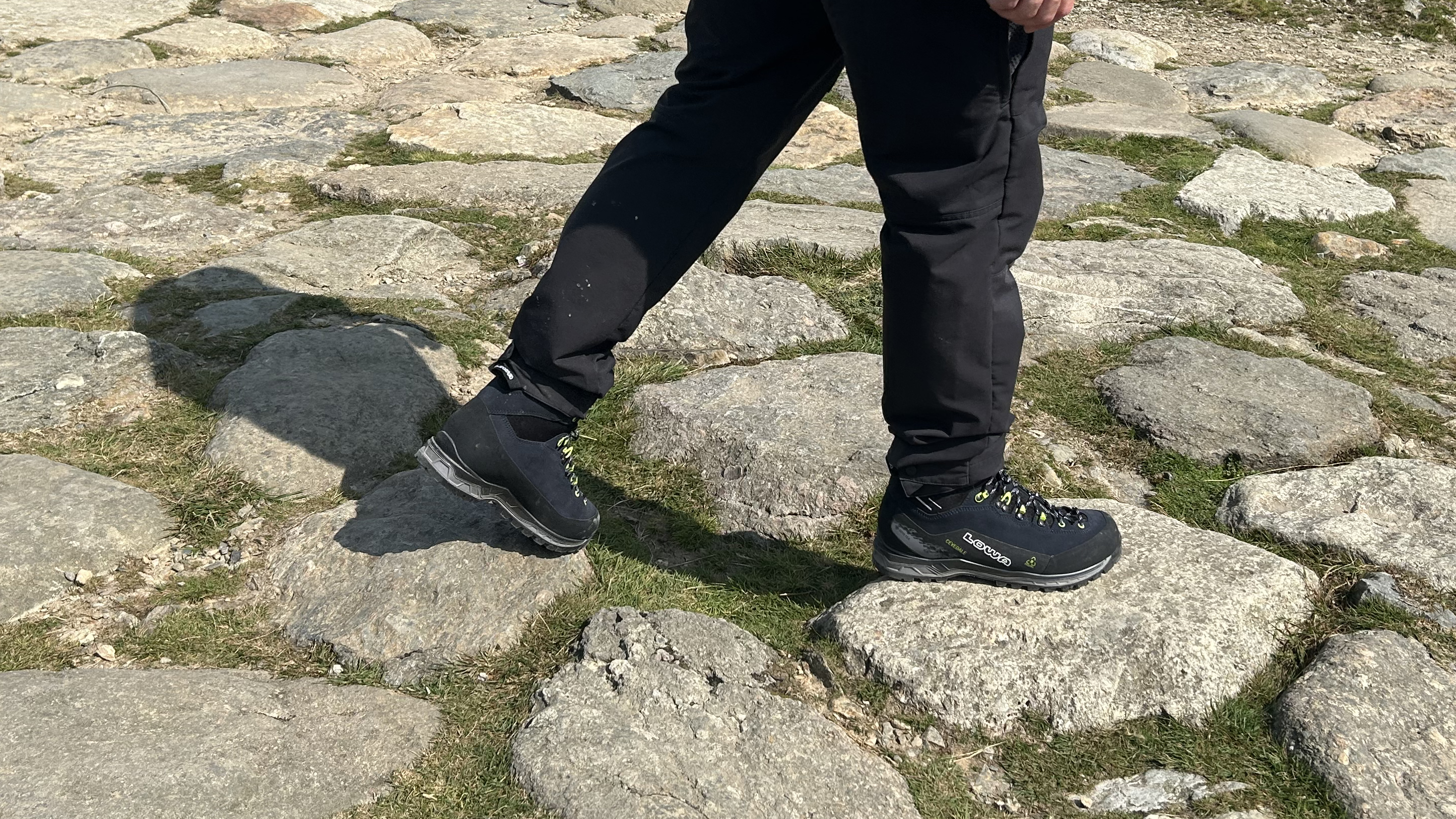
Here, you get all the usual features you’d expect: a reinforced TPU lip for taking a C2 crampon’s heel clip, a mighty toe box for kicking steps in the snow, a Gore-Tex membrane to keep things dry, and a grippy Vibram sole with a lug pattern designed for gripping rock. To wear, it feels reassuringly sturdy and supportive, though not as immediately nimble as the Trango or the Ortles Edge. I like the flexibility at the ankle – a feature it shares with the Ortles Edge. In my experience, this is a region that can become uncomfortable on long mountain days, so any additional give is a bonus.
Features
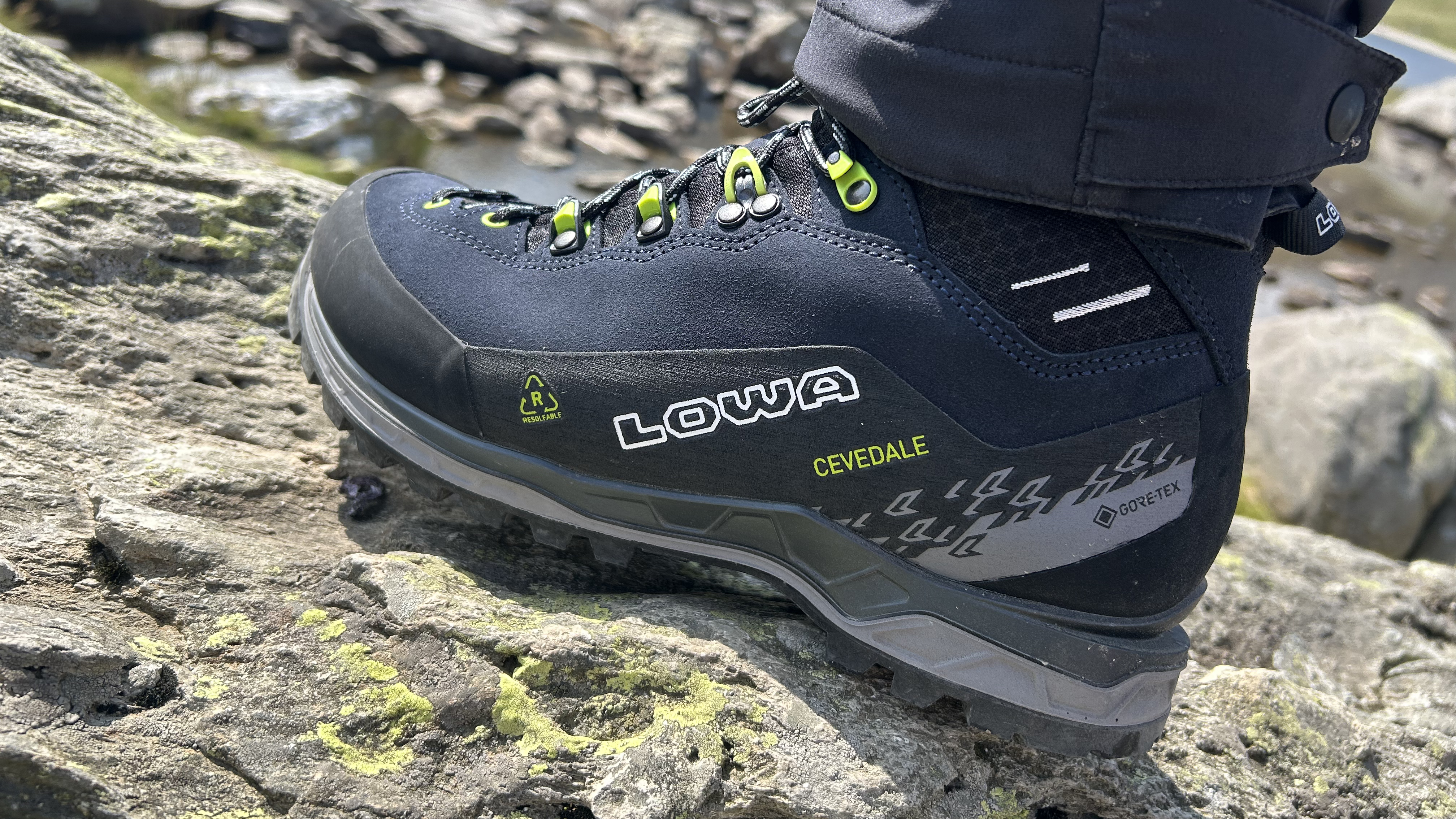
The Cevedale is highly protective, both against rock abrasion and the elements. The latter is down to its Gore-Tex bootie, which provides an effective shield against water ingress, enhanced by the boot’s stretch gaiter. The upper is made from suede, a soft cut of leather that’s more pliable than the forms of leather found closer to the surface of the hide. While it’s not as hardwearing as higher-grain materials like nubuck, it's more durable than many synthetic materials.
All the latest inspiration, tips and guides to help you plan your next Advnture!
A wrap-around rubber rand provides an additional shield against the rough stuff, crucial for techniques like wedging, where the foot is literally wedged into a gap in the rock to provide a hold. This feature is fairly standard in these kinds of boots.
There’s plenty to commend in the Cevedale’s lacing system. Like a climbing shoe, it reaches down towards the toes for a more fine-tuned fit. This provides confidence on tiny edges, enabling more precise footwork. In fact, the lacing system is split into two separate zones thanks to the patented I-Locks for customized tightening, enabling the wearer to find the perfect fit for their chosen activity. As an example, you wouldn’t want a tight toe region for a long walk in but once you hit the crag it becomes much more desirable. It’s a similar idea (though a different design) to that seen in Aku’s Rock DFS GTX approach shoes.

Then there’s Lowa’s patented X-Lacing, which holds the tongue in place, stopping it from slipping around during activities, reducing pressure points and the chance of ending up with blisters. It's a great addition.
Vibram provide the Scalatore Evo outsole, which features a hybrid rubber and lug pattern designed for gripping both soft trails and rocky scrambling terrain. The clue is in the name, scalatore is the Italian word for climber or mountaineer and it’s a sole specifically designed for high alpine summits. Like an approach shoe, the lug pattern features flatter climbing zones at the front and rear for enhanced grip on rock, particularly when edging or smearing. Yet the deep lugs also provide claws for boggier terrain.
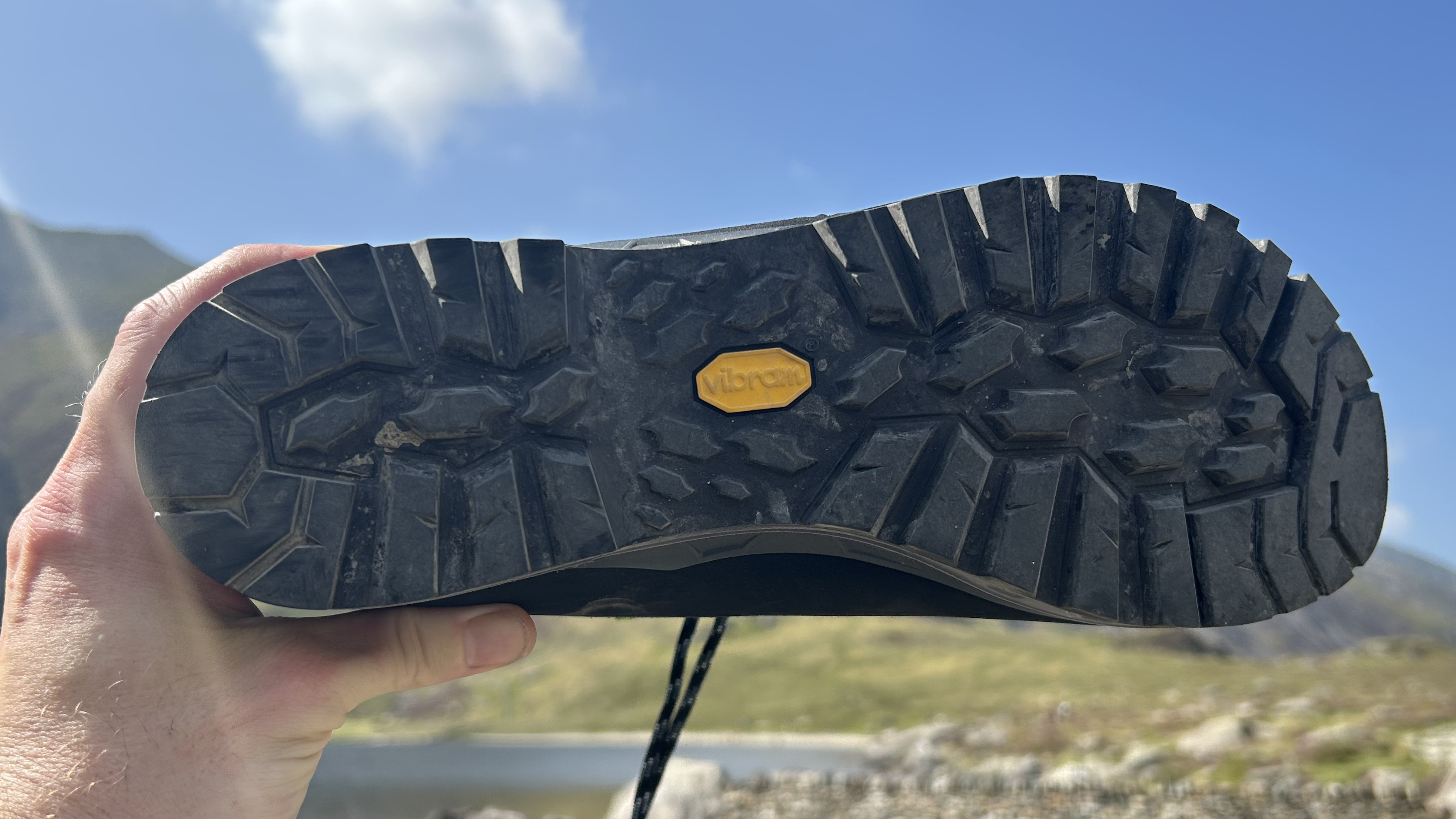
It's also noticeably rigid, both to provide a solid hold when engaging in precise foot placements and to ensure it binds effectively to a crampon. The last thing you need when exploring at 11,500ft (3,500m) is a crampon coming loose. As is usual, the sole curves upwards at the toes, adding reinforcement to this key region and enabling the wearer to be aggressive when kicking steps in snow.
In terms of sustainability, Lowa point out that the Cevedale is resoleable – it even recommends a specific UK provider to do the work on its website. This sort of construction is very welcome in this day and age and makes the initial cost of the boot seem more attractive.
In the mountains
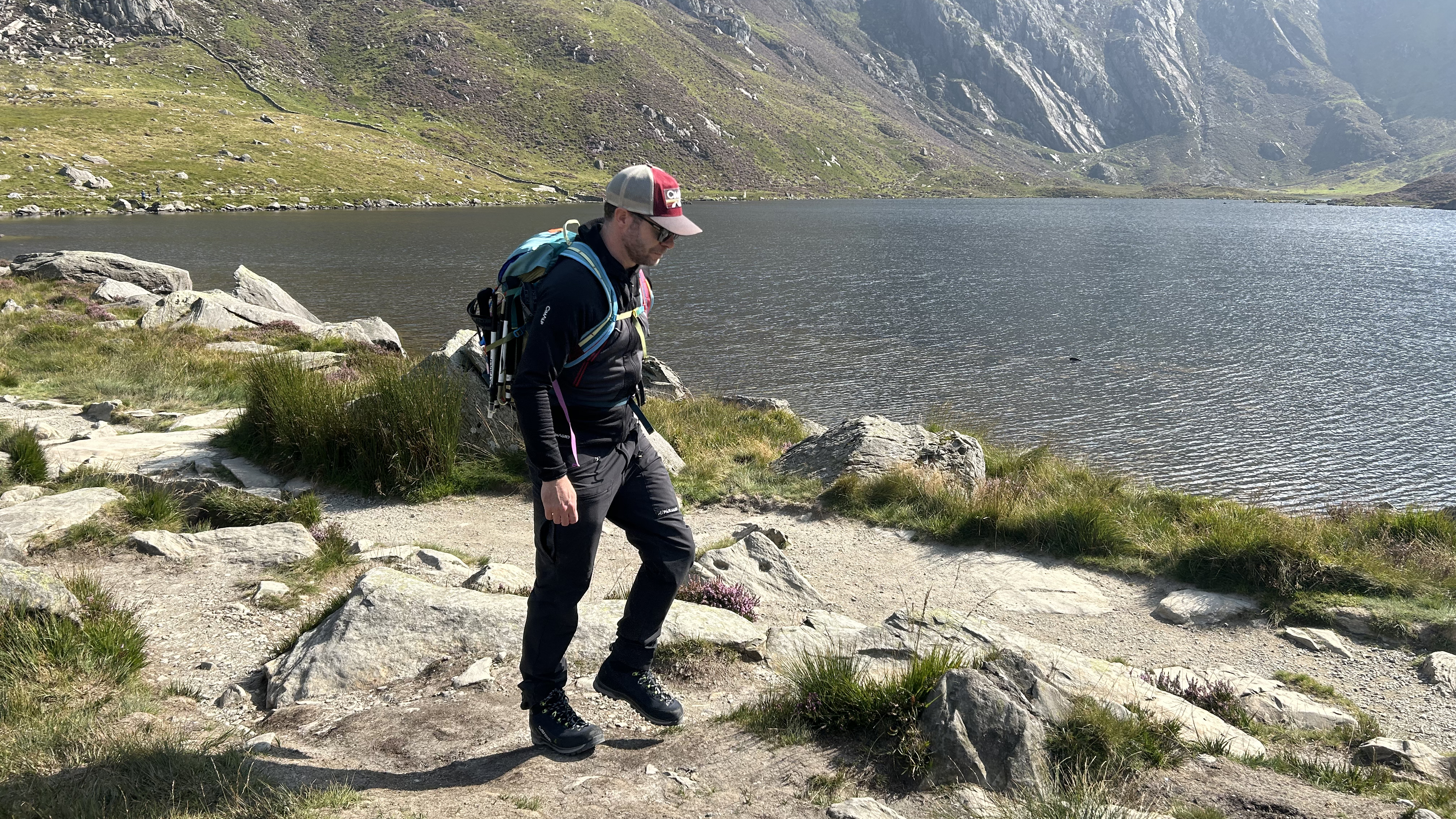
I’m yet to test the Cevedales in a winter or truly alpine environment, my test period having started in the spring. However, what I was able to asses was their suitability on long approaches and scrambles in the testing, rocky mountains of Eryri (Snowdonia) in North Wales.
They have been a pleasure to wear, and I've found them to be hugely accomplished on technical, rocky terrain. They’re not ideal for longer walk ins, being heavier than some B2 boots. As is often the case with mountaineering boots, their rigidity makes them feel much heftier than other forms of hiking footwear. A good option for long walk ins would be to wear a lightweight pair of shoes up to the more technical ground.
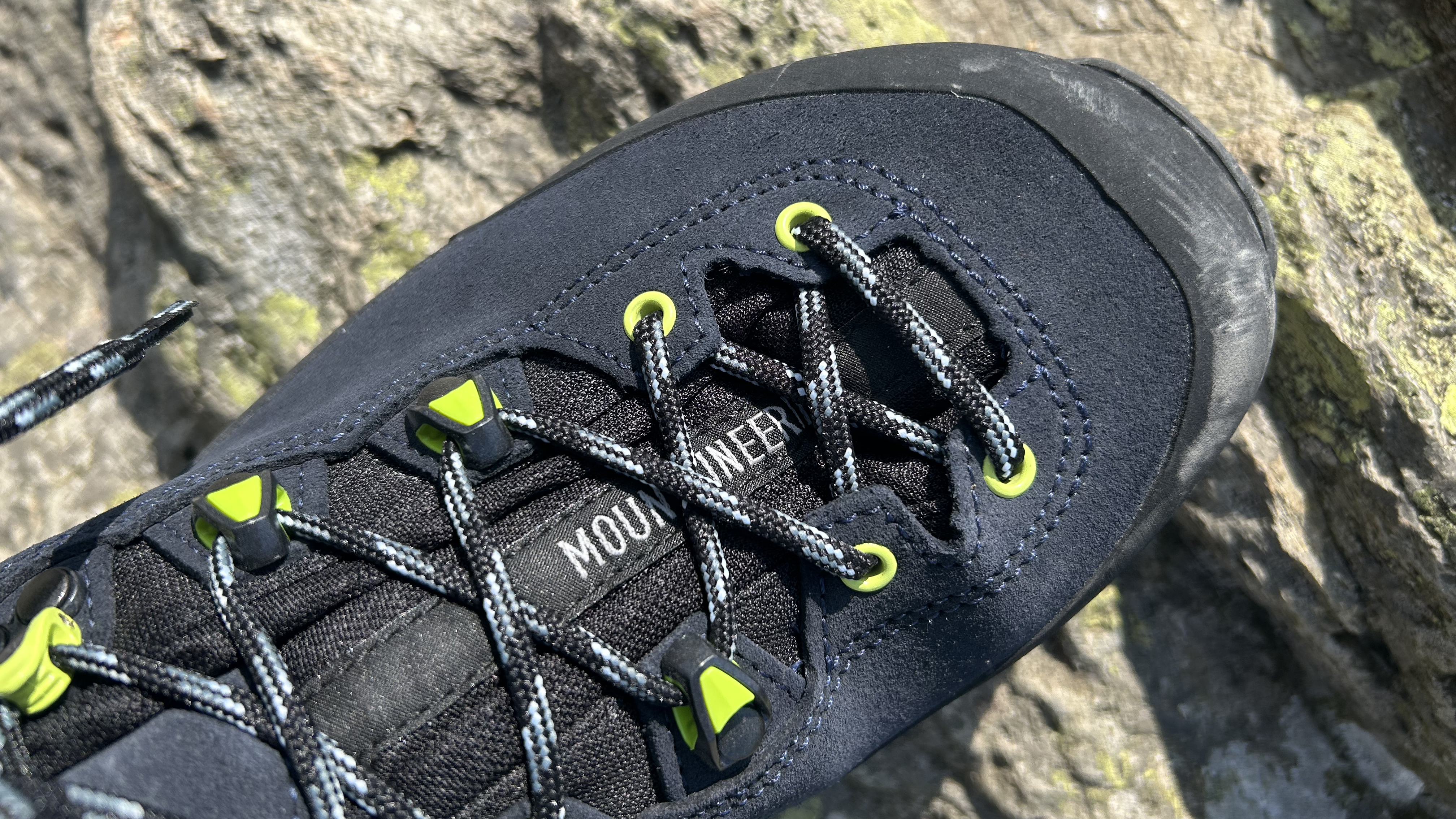
Nevertheless, the soft cuff tongue, elasticated heel gaiter and interior cushioning made them more comfortable than most boots of comparable weight. I found them much more comfortable to wear for extended periods than the Scarpa Manta Tech, though the La Sportiva Trango would be my preferred option for really long days in the mountains. The levels of stability and support are superb, a result of Lowa’s expertly made last: the foot-shaped mould that guides the design of its boots.
Romping through puddles in mountaineering boots is one of life's great joys – you'll feel like you're invincible to water ingress, especially when you pair them with gaiters. The same is true for the Cevedales, I was able to trust them to keep my feet dry throughout my adventures.
All in all, this is a very strong all-round mountaineering boot. My personal preference is for something a little lighter, though for outings where a hefty boot offers reassurance on really technical terrain, the Cevedale is a very good shout. The fact that it's fully resoleable only adds to its attraction.
Also consider

A very capable mountaineering boot with a modern aesthetic and innovative design touches. The comfort is excellent, the fit can be adapted thanks to an additional insole option and its relatively low weight means that it’s a pleasure to wear for prolonged periods. It’s crampon compatible too for winter adventures, though its sole isn’t as stiff as many mountaineering boots so it isn’t the best choice for steep ice or more technical alpinism.
Read our full Salewa Ortles Edge Mid Gore-Tex boots review
Pros
- Impressively lightweight
- Very comfortable for a mountaineering boot
- Grippy Pomoca outsole
- Nicely cushioned and elasticated heel
- Good levels of protection from rock and scree
- Innovative lacing system
Cons
- Outsole isn’t as rigid as more technical boots
- Not as durable as leather boots
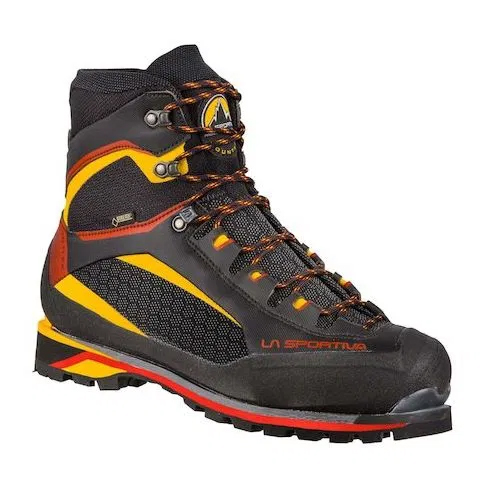
Arguably the most versatile mountain boot in the current range of La Sportiva’s famous Trango series, the Trango Tower is capable and comfortable in a variety of getting, from alpine missions and Scottish winter mountaineering to via ferrata adventures and rocky scrambling.
Read our full La Sportiva Trango Tower GTX review
Pros
- Lightweight
- Excellent grip
- Precise feel
Cons
- Outsole can wear quickly
- Not insulated
- Expensive
Comparison table
Boot | List price | Weight | Rating | Best use |
|---|---|---|---|---|
Lowa Cevedale Pro GTX Mid | £275 (UK only) | 1lb 14oz / 845g | B2 | Mountaineering and winter walking |
Salewa Ortles Edge Mid GTX | $349.95 (US) / £315 (UK) | 1lb 6oz / 635g | B2 | Light mountaineering and scrambling |
La Sportiva Trango Tower GTX | £330 (UK only) | 1lb 10oz / 745g | B2 | Alpinism and scrambling |
Alex is a freelance adventure writer and mountain leader with an insatiable passion for the mountains. A Cumbrian born and bred, his native English Lake District has a special place in his heart, though he is at least equally happy in North Wales, the Scottish Highlands or the European Alps. Through his hiking, mountaineering, climbing and trail running adventures, Alex aims to inspire others to get outdoors. He's the former President of the London Mountaineering Club, is training to become a winter mountain leader, looking to finally finish bagging all the Wainwright fells of the Lake District and is always keen to head to the 4,000-meter peaks of the Alps. www.alexfoxfield.com


